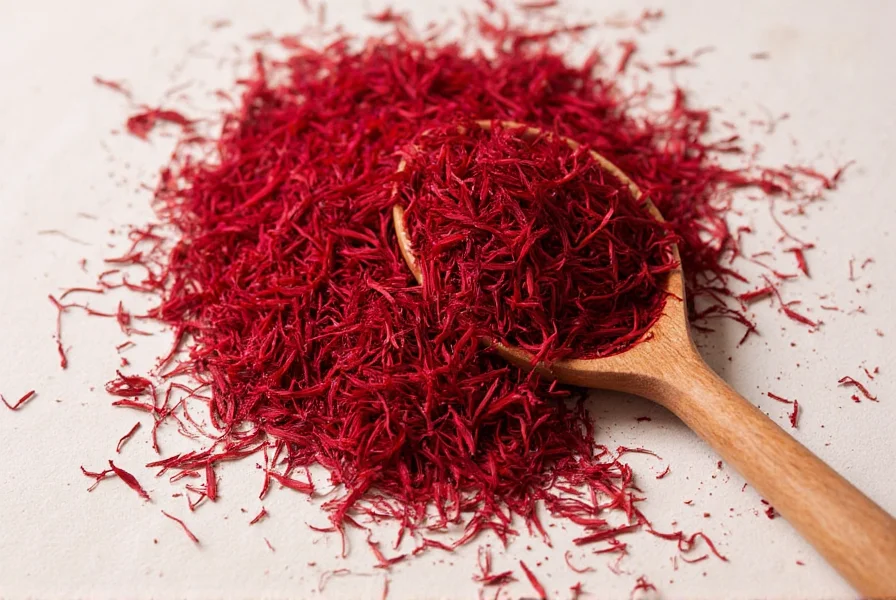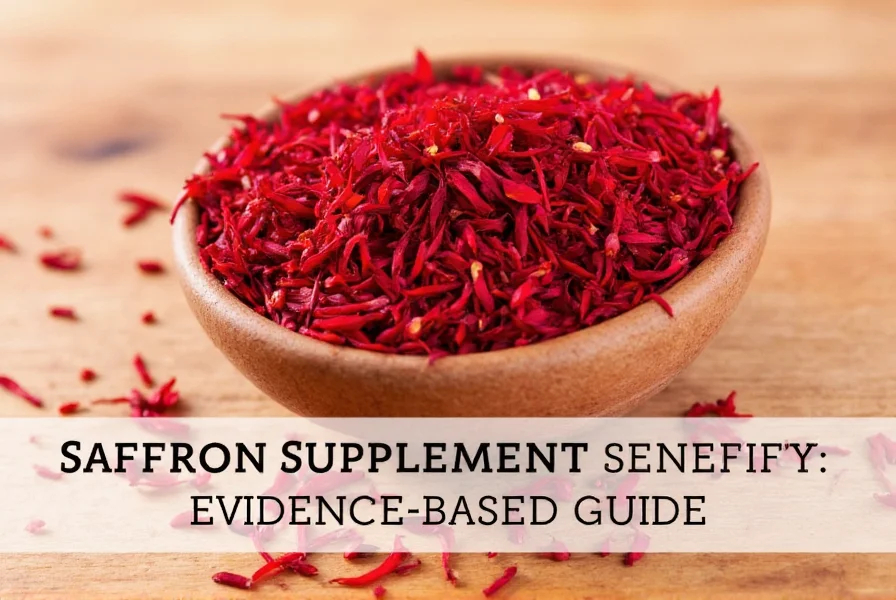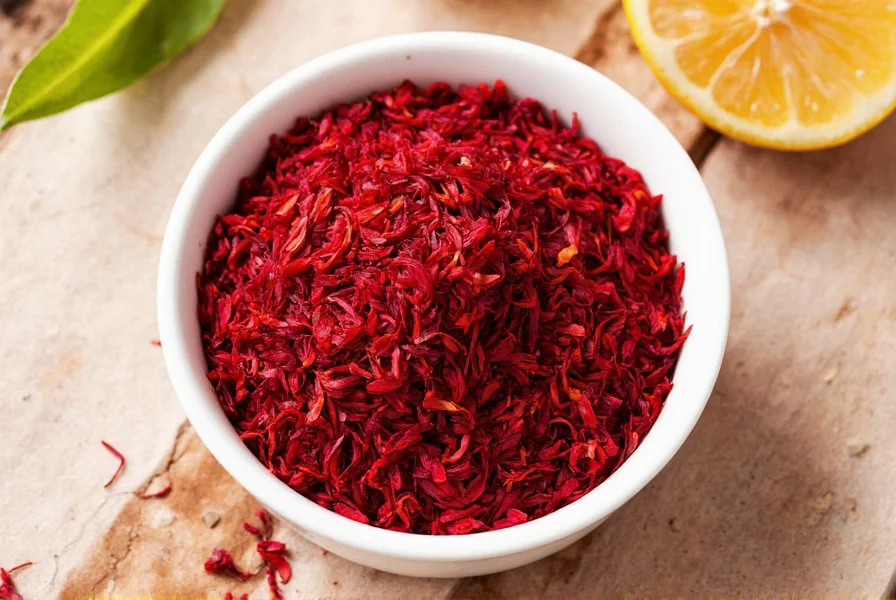Saffron, the world's most expensive spice by weight, has transitioned from culinary treasure to popular dietary supplement. This vibrant red spice, derived from the stigmas of Crocus sativus flowers, contains potent bioactive compounds that have captured scientific interest for their potential health applications. As consumers increasingly seek natural approaches to wellness, understanding the evidence behind saffron supplementation becomes essential.
The Science Behind Saffron Supplements
Saffron's therapeutic potential stems primarily from three key compounds: crocin, crocetin, and safranal. These bioactive elements work through multiple physiological pathways:
- Crocin - The primary carotenoid responsible for saffron's red color, with potent antioxidant properties that may protect neural pathways
- Crocetin - A metabolite of crocin that demonstrates anti-inflammatory effects and may enhance oxygen diffusion in tissues
- Safranal - The compound behind saffron's distinctive aroma, which appears to modulate neurotransmitter activity
Unlike culinary saffron where you might use mere threads in cooking, supplements deliver concentrated doses—typically 15-30mg daily—that provide clinically relevant amounts of these compounds. This concentration makes saffron supplementation fundamentally different from culinary use, transforming it from flavoring agent to potential therapeutic intervention.
Evidence-Based Health Benefits of Saffron Supplements
Rigorous clinical research has examined saffron's effects across several health domains. The most compelling evidence supports these applications:
| Health Application | Research Evidence | Recommended Dosage |
|---|---|---|
| Mood Support | Multiple RCTs show 30mg/day saffron extract equals antidepressants for mild-moderate depression | 15-30mg standardized extract daily |
| Eye Health | Studies indicate protection against retinal damage and age-related macular degeneration | 20-30mg daily for 3-6 months |
| PMS Symptom Relief | Clinical trials demonstrate reduced physical and emotional PMS symptoms | 30mg/day during luteal phase |
| Appetite Control | Preliminary research shows potential for reducing snacking frequency | 17.5mg twice daily |
A 2022 meta-analysis published in Phytomedicine reviewed 12 randomized controlled trials involving 906 participants with mild-to-moderate depression. The analysis concluded that saffron supplementation demonstrated comparable efficacy to selective serotonin reuptake inhibitors (SSRIs) with potentially fewer side effects. However, researchers noted that longer-term studies are needed to confirm these findings.
Saffron Supplement Quality Considerations
Not all saffron supplements deliver equal value. The premium nature of this spice makes it vulnerable to adulteration and quality issues. When evaluating saffron as a supplement, consider these critical factors:
- Standardization - Look for products standardized to 2-3% safranal, 2-3% crocin, and 17-20% crocetin
- Third-party testing - Reputable brands undergo independent verification for purity and potency
- Adulteration risks - Saffron frequently gets diluted with safflower, turmeric, or synthetic dyes
- Extraction method - Water-based extracts preserve active compounds better than alcohol-based
Research from the Journal of Agricultural and Food Chemistry indicates that up to 50% of commercial saffron products show significant adulteration. This makes third-party verification essential when selecting saffron supplements for health purposes rather than culinary use.

Safety Profile and Potential Side Effects
Saffron supplements demonstrate good safety at recommended doses, but certain precautions apply:
- Standard doses (up to 30mg/day) typically cause minimal side effects
- Possible mild reactions include dry mouth, anxiety, dizziness, or nausea
- Doses exceeding 1.5g daily may cause serious toxicity
- Pregnant women should avoid therapeutic doses due to potential uterine stimulation
- Individuals taking antidepressants should consult healthcare providers due to potential interactions
A comprehensive safety review in Food and Chemical Toxicology concluded that saffron demonstrates low toxicity at standard supplemental doses, with adverse events being rare and generally mild. However, the review emphasized that long-term safety data beyond 12 weeks remains limited.
Comparing Saffron to Alternative Supplements
When considering saffron as a supplement, understanding how it compares to alternatives provides valuable context:
- vs St. John's Wort - Both show antidepressant effects, but saffron appears to have fewer drug interactions
- vs Lutein/Zeaxanthin - For eye health, saffron works through different mechanisms than these carotenoids
- vs 5-HTP - Saffron modulates multiple neurotransmitters rather than focusing primarily on serotonin
- vs Turmeric - Both have anti-inflammatory properties but target different inflammatory pathways
Unlike many popular supplements that target single pathways, saffron's multiple bioactive compounds create a broader physiological effect. This polypharmacological approach may explain why some clinical trials show saffron outperforming single-compound supplements for certain applications.

Practical Guidance for Saffron Supplementation
For those considering saffron as a supplement, evidence-based recommendations include:
- Start with 15mg daily, gradually increasing to 30mg if needed
- Choose products with verified crocin and safranal content
- Allow 4-8 weeks to assess effects, particularly for mood applications
- Take with food to enhance absorption of fat-soluble compounds
- Store in cool, dark place to preserve potency of light-sensitive compounds
Researchers at the University of Melbourne note that consistency matters most with saffron supplementation—daily use over several weeks yields better results than sporadic consumption. They also emphasize that saffron works best as part of a comprehensive wellness approach rather than a standalone solution.
Conclusion: Weighing the Evidence on Saffron Supplements
Saffron shows genuine promise as a supplement for specific health applications, particularly mood support and eye health. The growing body of clinical research provides reasonable evidence for its efficacy at appropriate doses. However, consumers should approach saffron supplementation with realistic expectations—this isn't a miracle cure but rather a potentially valuable component of a holistic wellness strategy.
Quality remains the critical factor separating effective saffron supplements from ineffective products. Given the high risk of adulteration in this premium spice, investing in third-party verified products makes practical sense despite the higher cost. As research continues to evolve, we may discover additional applications for this ancient spice in modern wellness practices.
Frequently Asked Questions
How long does it take for saffron supplements to work for depression?
Most clinical studies show noticeable effects after 4-8 weeks of consistent daily use at 30mg dosage. Some participants report subtle improvements in mood within 1-2 weeks, but significant changes typically require a month or more of regular supplementation.
Can I get the same benefits from culinary saffron as from supplements?
No, culinary saffron provides only trace amounts of active compounds. You would need to consume impractical quantities (several grams daily) to reach the 15-30mg doses used in clinical studies. Supplements provide concentrated, standardized extracts that deliver therapeutic levels of crocin, crocetin, and safranal not achievable through cooking.
What's the difference between saffron extract and whole saffron supplements?
Saffron extract supplements contain concentrated bioactive compounds (crocin, safranal, crocetin) standardized to specific percentages, while whole saffron supplements contain powdered stigmas without concentration. Extracts deliver more consistent, potent doses in smaller capsules, whereas whole saffron requires larger doses to achieve similar effects and may vary significantly in potency between batches.
Are there any medications that interact with saffron supplements?
Saffron may interact with antidepressants (particularly SSRIs and MAOIs), blood thinners, and sedative medications. It potentially enhances the effects of these drugs, which could lead to adverse reactions. Always consult your healthcare provider before combining saffron supplements with prescription medications, especially those affecting serotonin levels or blood clotting.
How can I verify if my saffron supplement contains real saffron?
Look for third-party testing certifications (USP, NSF, ConsumerLab), check for standardized crocin/safranal content (2-3% each), and verify the manufacturer provides a certificate of analysis. Reputable brands often include HPLC (High-Performance Liquid Chromatography) test results showing specific compound percentages. Avoid products with suspiciously low prices, as genuine saffron extract cannot be produced cheaply.











 浙公网安备
33010002000092号
浙公网安备
33010002000092号 浙B2-20120091-4
浙B2-20120091-4